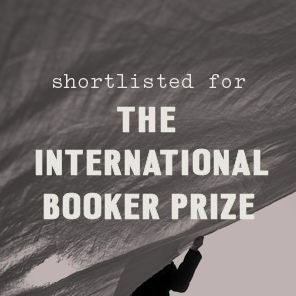The White Book
FROM HAN KANG, WINNER OF THE 2024 NOBEL PRIZE IN LITERATURE
“[Han Kang writes in] intense poetic prose that . . . exposes the fragility of human life.”—from the Nobel Prize citation
SHORTLISTED FOR THE INTERNATIONAL BOOKER PRIZE • A “formally daring, emotionally devastating, and deeply political” (The New York Times Book Review) exploration of personal grief through the prism of the color white, from the internationally bestselling author of The Vegetarian
“Stunningly beautiful. . . one of the smartest reflections on what it means to remember those we’ve lost.”—NPR
Shortlisted for the International Booker Prize, Han Kang’s The White Book is a meditation on color, as well as an attempt to make sense of her older sister’s death, who died in her mother’s arms just a few hours after she was born.
In captivating, starkly beautiful language, The White Book is a letter from Kang to her sister, offering a multilayered exploration of color and its absence, and of the tenacity and fragility of the human spirit.
1128751075
“[Han Kang writes in] intense poetic prose that . . . exposes the fragility of human life.”—from the Nobel Prize citation
SHORTLISTED FOR THE INTERNATIONAL BOOKER PRIZE • A “formally daring, emotionally devastating, and deeply political” (The New York Times Book Review) exploration of personal grief through the prism of the color white, from the internationally bestselling author of The Vegetarian
“Stunningly beautiful. . . one of the smartest reflections on what it means to remember those we’ve lost.”—NPR
Shortlisted for the International Booker Prize, Han Kang’s The White Book is a meditation on color, as well as an attempt to make sense of her older sister’s death, who died in her mother’s arms just a few hours after she was born.
In captivating, starkly beautiful language, The White Book is a letter from Kang to her sister, offering a multilayered exploration of color and its absence, and of the tenacity and fragility of the human spirit.
The White Book
FROM HAN KANG, WINNER OF THE 2024 NOBEL PRIZE IN LITERATURE
“[Han Kang writes in] intense poetic prose that . . . exposes the fragility of human life.”—from the Nobel Prize citation
SHORTLISTED FOR THE INTERNATIONAL BOOKER PRIZE • A “formally daring, emotionally devastating, and deeply political” (The New York Times Book Review) exploration of personal grief through the prism of the color white, from the internationally bestselling author of The Vegetarian
“Stunningly beautiful. . . one of the smartest reflections on what it means to remember those we’ve lost.”—NPR
Shortlisted for the International Booker Prize, Han Kang’s The White Book is a meditation on color, as well as an attempt to make sense of her older sister’s death, who died in her mother’s arms just a few hours after she was born.
In captivating, starkly beautiful language, The White Book is a letter from Kang to her sister, offering a multilayered exploration of color and its absence, and of the tenacity and fragility of the human spirit.
“[Han Kang writes in] intense poetic prose that . . . exposes the fragility of human life.”—from the Nobel Prize citation
SHORTLISTED FOR THE INTERNATIONAL BOOKER PRIZE • A “formally daring, emotionally devastating, and deeply political” (The New York Times Book Review) exploration of personal grief through the prism of the color white, from the internationally bestselling author of The Vegetarian
“Stunningly beautiful. . . one of the smartest reflections on what it means to remember those we’ve lost.”—NPR
Shortlisted for the International Booker Prize, Han Kang’s The White Book is a meditation on color, as well as an attempt to make sense of her older sister’s death, who died in her mother’s arms just a few hours after she was born.
In captivating, starkly beautiful language, The White Book is a letter from Kang to her sister, offering a multilayered exploration of color and its absence, and of the tenacity and fragility of the human spirit.
22.0
In Stock
5
1

The White Book
160
The White Book
160
22.0
In Stock
Product Details
| ISBN-13: | 9780525573067 |
|---|---|
| Publisher: | Random House Publishing Group |
| Publication date: | 02/19/2019 |
| Pages: | 160 |
| Sales rank: | 87,892 |
| Product dimensions: | 5.30(w) x 7.80(h) x 0.80(d) |
About the Author
From the B&N Reads Blog











